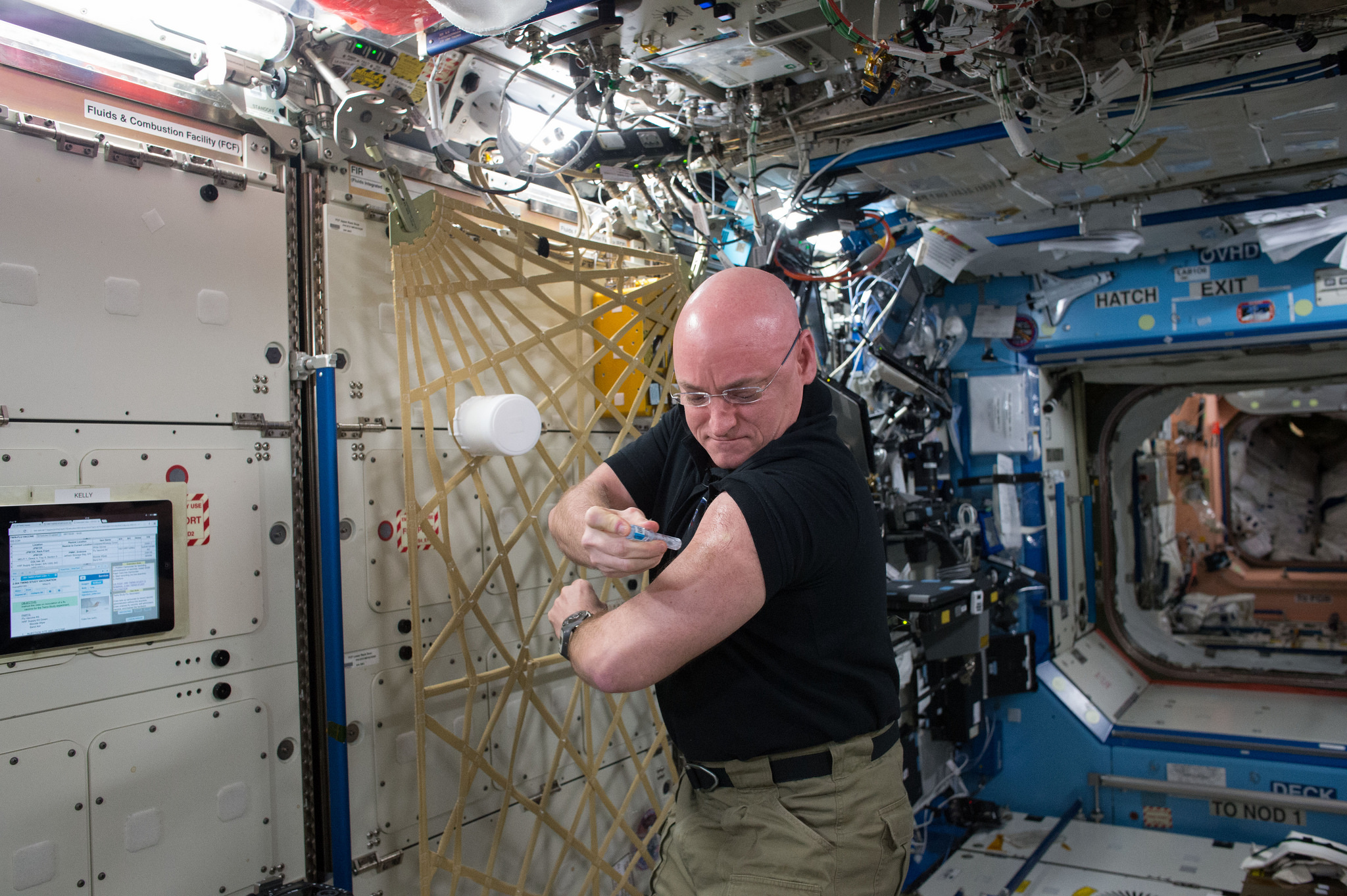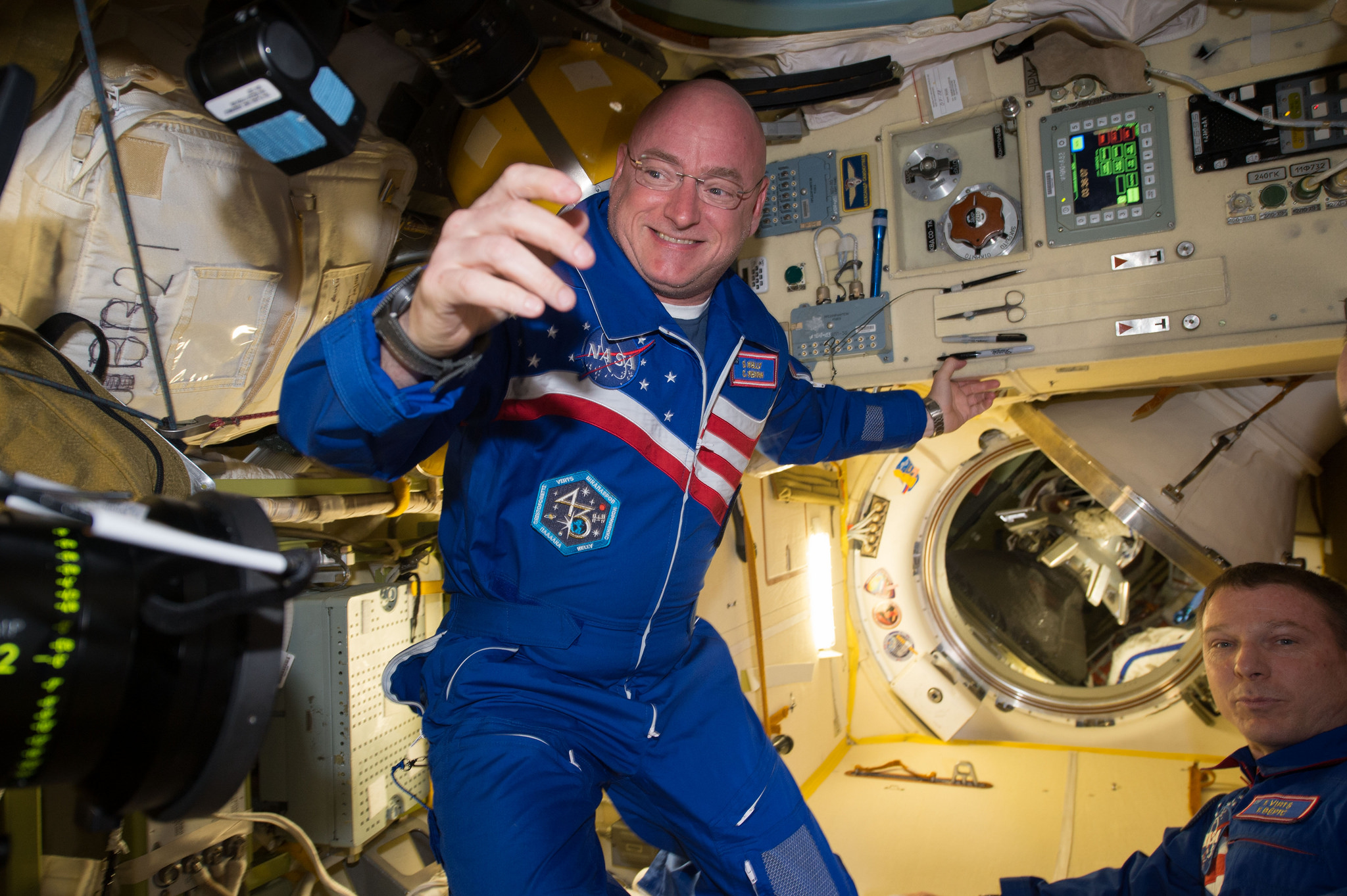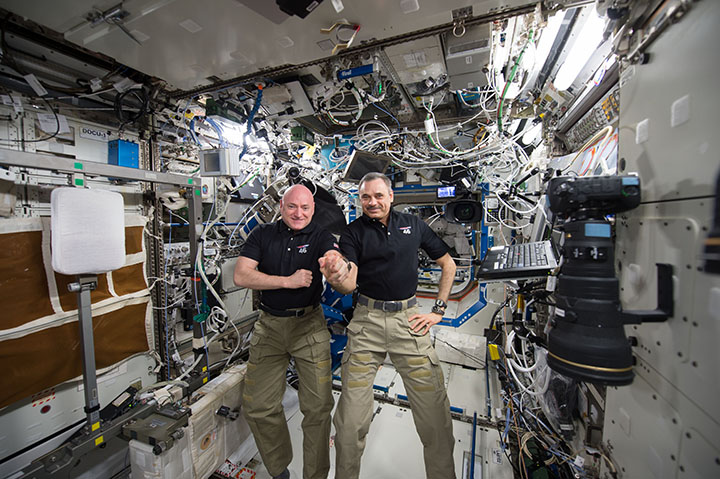Like all journeys off planet Earth, it started with a flash, and a roar.
NASA astronaut Scott Kelly and Russian cosmonaut Mikhail Kornienko blasted off from the Baikonur Cosmodrome in Kazakhstan on March 27, 2015. With a successful landing 340 days later on March 1, 2016, the pair completed one of the most ambitious missions in the history of the International Space Station and opened a new chapter in human exploration.



The Science
During their record-setting mission, nearly 400 investigations were conducted that advance NASA’s mission to reach new heights, reveal the unknown, and benefit all of humanity. Kelly and Kornienko participated in dozens of studies to provide new insights into how the human body adjusts to weightlessness, isolation, radiation and the stress of long-duration spaceflight, which will include the Journey to Mars. Kelly’s twin brother, former NASA astronaut Mark Kelly, participated in parallel twin studies on Earth to help scientists compare the effects on the body and mind in space.
The space station’s orbital path over 90 percent of the Earth’s population provides a unique vantage point for studying and taking images of our planet. The one-year crew also saw the arrival of a new instrument to study the signature of dark matter to understand our solar system and beyond. Technology demonstrations conducted during the mission, such as a test of network capabilities for operating swarms of spacecraft, continue to drive innovation.
The strong U.S.-Russian collaboration during the one-year mission is the latest accomplishment in 15 years of continuous global teamwork that shows how nations with widely divergent languages, cultures and engineering philosophies can advance shared goals in science and space exploration. Strengthening international partnerships will be key in taking humans deeper into the solar system.
While scientists will begin analyzing data from Kelly and Kornienko as soon as they return to Earth, it could take from six months to six years before results are published from the research. The scientific process takes time, and processing the data from all the investigations tied to the one-year mission will be no easy task. Additionally, some blood, urine and saliva samples from Kelly and Kornienko remain stored in the space station freezers until they can be returned on the SpaceX Dragon spacecraft. Early on in the analytical process, scientists may see indications of what we can expect, but final results will develop and mature long after Kelly and Kornienko land.
Kelly also spent some of his spare time to showcase life in a microgravity environment in vivid 4K.
Like many crew members, Kelly was prolific in sharing his time in space across several social media platforms, including Twitter, Instagram and Facebook. Some of the highlights include stunning Earth imagery, glimpses at station science experiments as they progressed, and even conversations with President Obama.
The Operations
Kelly saw the arrival of six resupply spacecraft during his mission. He was involved in the robotic capture of SpaceX’s Dragon during the company’s sixth commercial resupply mission, and Orbital ATK’s Cygnus during the company’s fourth commercial resupply mission. The fifth Japanese HTV cargo craft and three Russian Progress resupply ships also brought several tons of supplies to the station.
Including crewmate Gennady Padalka, with whom Kelly and Kornienko launched on March 27, 2015, 13 astronauts and cosmonauts representing seven different nations lived on station during the one-year mission.
During his time on the orbiting complex, Kelly ventured outside the confines of the space station for three spacewalks. The first included a variety of station upgrade and maintenance tasks, including routing cables to prepare for new docking ports for U.S. commercial crew spacecraft. The second spacewalk successfully reconfigured a space station ammonia cooling system and restored the station to full solar power-generating capability. The third restored functionality to the station’s Mobile Transporter system.
The Return
The mission will continue even with Kelly back on Earth. NASA’s Human Research Program will collect post-flight medical data at pre-determined points three-months and six-months after Kelly’s return for the one-year mission research. For the twins study research, NASA will continue to collect data as far out as a year after his return.
Kelly returned to Ellington Field in Houston a little over 24 hours after landing, making his first steps back on U.S. soil in over a year. Kelly disembarked the NASA plane to a jubilant greeting from family, friends and well-wishers. Second Lady of the United States Dr. Jill Biden was on hand to welcome Kelly home along with Dr. John Holdren, director of the White House Office of Science and Technology and NASA Administrator Charles Bolden.
NASA’s science community behind the one-year mission discussed the success of this historic mission, which was able to take advantage of 21st Century technology and techniques to gather critical data on the physical and mental changes and challenges astronauts may face when they embark on longer-duration missions.
Scott Kelly’s first opportunity to speak with the media and public took place on Friday, March 4 where he shared his perspective on the mission, what it means for NASA and what he’s looking forward to for the future.
The completion of the one-year mission and its studies will help guide the next steps in planning for long-duration deep space missions that will be necessary as humans move farther into the solar system. Kelly and Kornienko’s mission will inform future decisions and planning for other long-duration missions, whether they are aboard the space station, a deep space habitat in lunar orbit, or a mission to Mars.



























